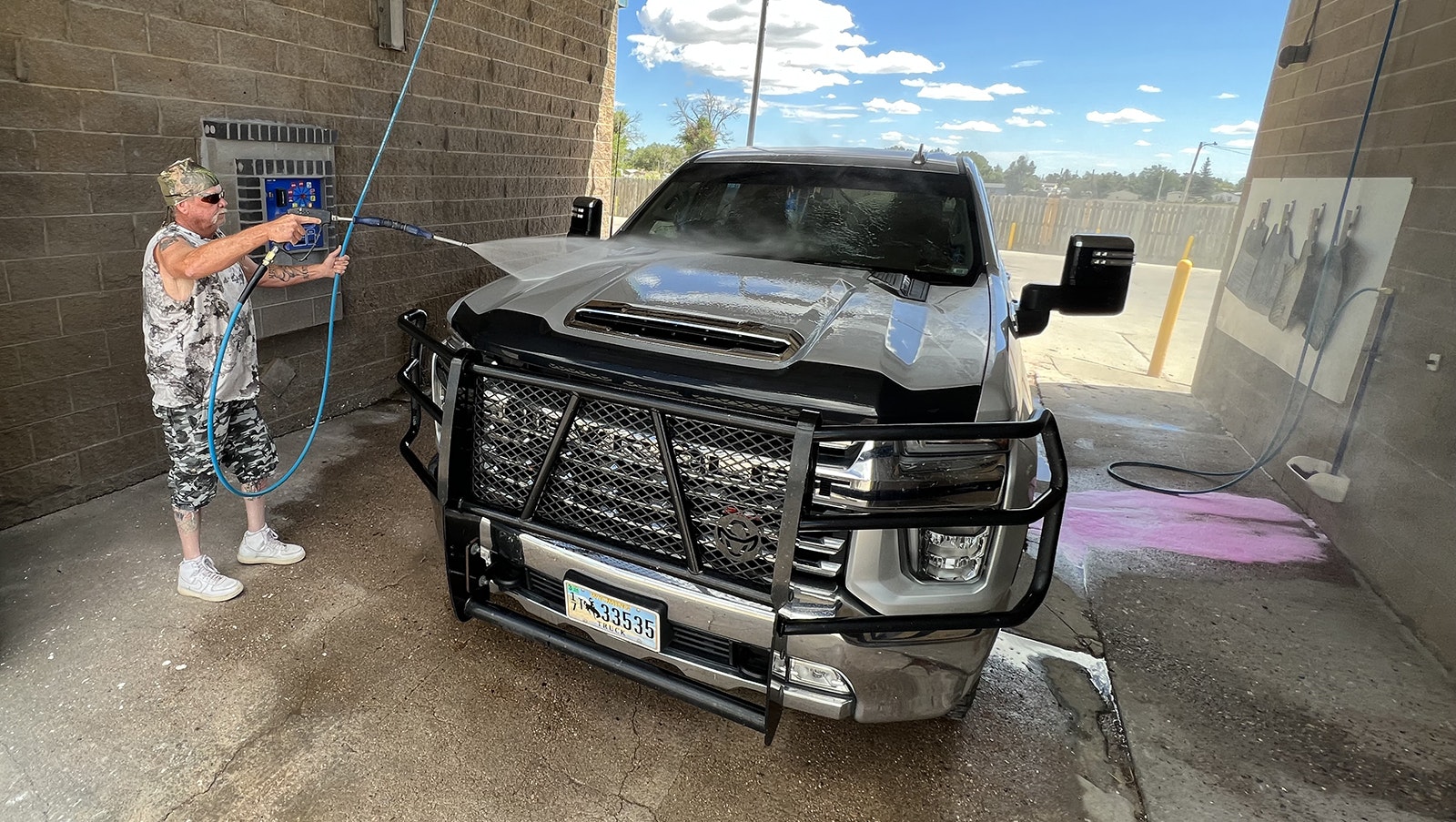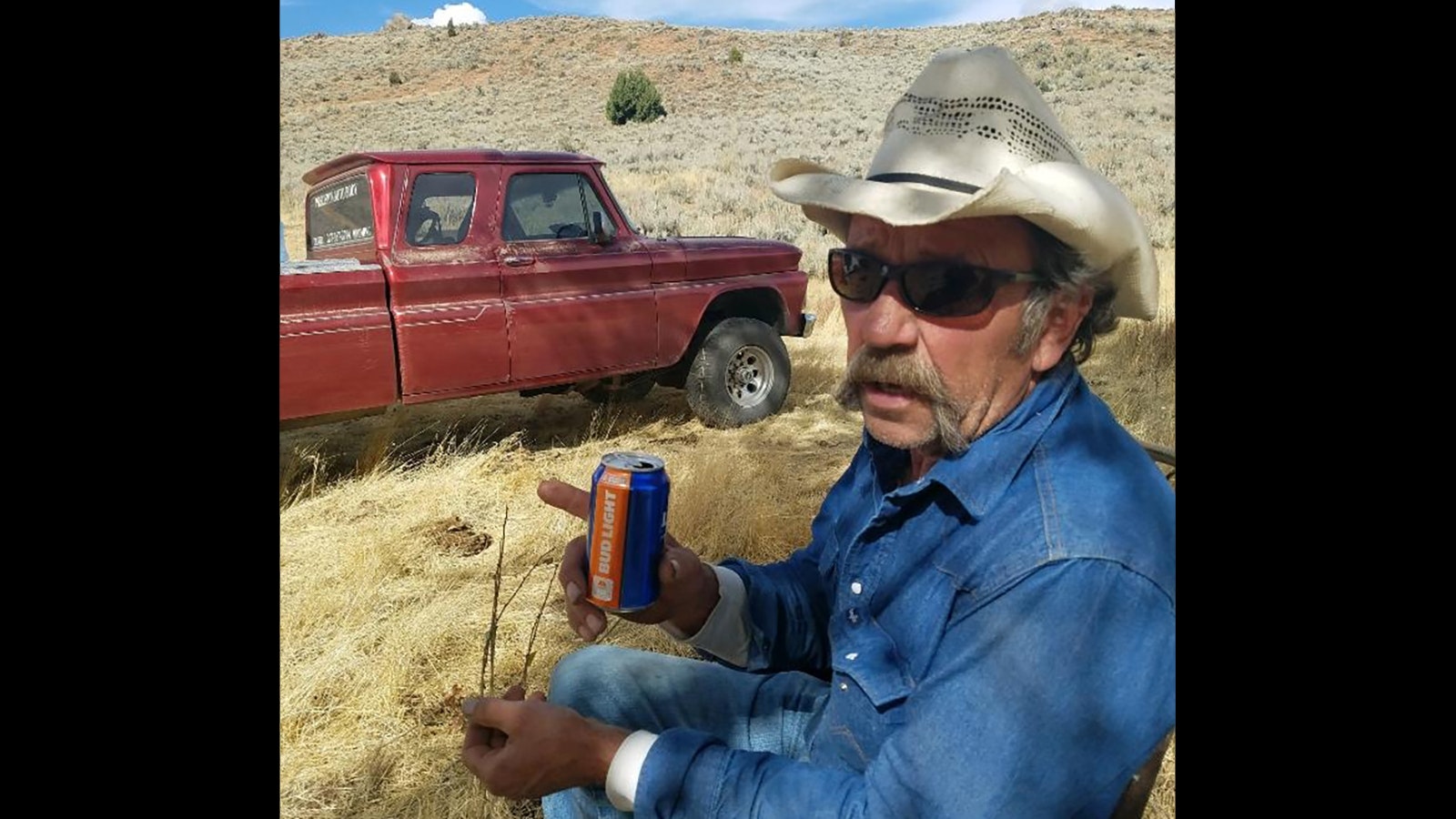Expect some serious Wyoming side-eye to an incorrect answer to the question "what do you drive?"
If your answer is anything other than a pickup, that will pretty much dictate whether you'll get the job, another round or a date with that cowgirl.
There might be one county in Wyoming where the Subarus, Mercedes and Audis outnumber pickups. Everywhere else, trucks dominate the landscape.
Heavy duty Fords, Chevys and Dodges with flatbeds, ranch hand bumpers, oversized tires, custom exhaust, diamond plate toolboxes and gooseneck hitches are central to Cowboy State culture.
Wyoming is a state where the value of many pickups exceeds that of some of the homes they're parked in front of.
The Cowboy State trails only one — Texas — in the percentage of auto loans that exceed payments of $1,000 per month, according to a July 3 report from Experian.com. The cost of a new heavy-duty pickup can run $90,000 or more, depending on its options.
What is it about trucks that Wyoming loves so much?
A Mechanic's Perspective
Curt Yaney is an Automotive Service Excellence (ASE) certified master mechanic in Pinedale who has worked on pickups for nearly 40 years. He's seen an evolution in trucks over those years starting from a time when a pickup was strictly utility.
Yaney owns seven Jeeps, four of which he drives, including a Comanche pickup and a 1957 Willys that is being rebuilt from the ground up. One is for sale.
Up through the 1980s, he said pickups were basically an engine, transmission and a single cab (which is rare today) and a box to haul stuff around. They rode rough and some didn't even have air conditioning. They had engines, transmissions and differentials that could be rebuilt over and over again.
"Today's pickups are vehicles you can drive anywhere, but they also have to work hard because that's how Wyoming people are," he said.
New pickups are engineering marvels with super tight engine and transmission tolerances that make high horsepower, torque and fuel mileage.
But when vehicle problems arise, Yaney said because of the tight tolerances in the engines, transmissions and differentials, the repair bills are much higher. Those major parts more often than not must be replaced rather than repaired.
"The manufacturers have achieved better fuel economy with these super-tight tolerances, but now if you find a spun rod bearing you can't take it apart and fix it and make it last another 100,000 miles," he said. "Engines are assembled by robots in dust-free clean zones and most local machine shops just aren't going to invest that much money to keep up."
Yaney said another major evolution in the auto industry relates to the cost ratio between labor and parts. In the 1970s and ’80s, cost of labor versus parts was about a 70/30 split. In the ’90s it changed to about 50/50. Today parts are more expensive than labor. The split is 30/70, a reversal from the past.

‘I’m A Truck Guy’
That love affair with pickups has created a division within truck culture: utility vs. vanity.
While being work vehicles is in pickup DNA, today’s appeal is more for drivability and status. It’s a line Mark Fillmore of Cheyenne knows well. A self-proclaimed truck fanatic — “I don’t drive anything else” — he said he has multiple trucks for specific things.
The 2020 Chevy 2500 Silverado he was washing last weekend is his everyday utility work truck, but that doesn’t mean he doesn’t like it to look good, Fillmore said.
“I’m a truck guy,” he said. “This is a work truck, but I don’t have anything against people who get them just for their looks.”
Some hard-core truck fanatics consider people who won’t take their pickups off-road or load up their beds with plywood and drywall because for cosmetic reasons “truck posers.”
Fillmore isn’t one of those. He loves just driving pickups because they sit higher than normal cars, have roomier cabs and overall are just better to drive. That’s why he has another truck he uses more as a driver.
In Pine Bluffs, Wyoming, a blue-collar farming town on the Nebraska border, pickups aren’t just preferred, they’re essential to the local economy.
Maddox Drager uses his every day, and while he loves a nice, new, blinged-out pickup as anyone, it has to work.
“There’s a difference between someone who has a nice truck and using it as a truck and not,” he said.
Features and Modifications
Climate control features and other creature comforts developed for luxury cars are now commonplace for trucks.
Things like adaptive cruise control, satellite safety communications, automatic tailgates, touch-screen zonal air conditioning and heat and safety controls that won't let the vehicle wander out of its lane of travel are all now available on trucks.
The technology is all heading toward electric vehicles and electric hybrid vehicles that can drive themselves, Yaney said.
"I've talked with a number of customers who didn't even know they were driving a hybrid," he said.
Regarding modifications, Yaney said diesel engine tuners, front-leveling lift kits and many other performance products will bump horsepower and torque significantly, but those extras come with a cost.
"You can do a lot of tweaking to get more horsepower and torque," he said. "But in all my years of working on Cummins engines I cannot remember a stock one that I had to replace or rebuild. When you add horsepower and torque you take away longevity and reliability."

A Wyoming Truck Pioneer
Lloyd Reiter of Daniel, Wyoming, is an innovator in pickup truck design. The owner of Precision Auto Body, Reiter built his first truck nearly 50 years ago. Reiter has taken the best parts from Chevy, Ford and Dodge and melded them into a design that is both unique and useful.
He owns two operational pickups of this makeup with a third that's still in the shop. His formula is to use a 1966 Chevy truck body, then build a custom extended cab with custom paint colors and custom upholstery and set it on top of a Dodge chassis with a 12-valve propane assisted Cummins engine and a few scattered Ford parts.
The propane assist adds about 25 horsepower, increases fuel mileage and uses about five gallons of propane in 3,500 miles, he said.
Other customizations include triple windshield wipers, backup cameras and aluminum blocks between the leaf springs to smooth out the ride. He prefers the old Chevy bodies because he can buy new panels and doors for them.
The two trucks, Red and Blue, have run well over a million miles averaging just over 20 miles per gallon, he said. Towing, hauling, camping and hunting, Reiter's trucks are not asphalt queens. They've both been tested in the backcountry and under heavy loads.
Red, built in 1993 cost Reiter $3,500 to build. Blue, built in 2006, cost about $16,000 to build. He's already received an offer of $100,000 for his green dually, that's still in the shop awaiting final cab assembly.
"I beat the crap out of these trucks, but they still work perfect," Reiter told Cowboy State Daiily. "If you can't use it there's no sense having it.”









